Last Updated on February 5, 2025 by Owen McGab Enaohwo
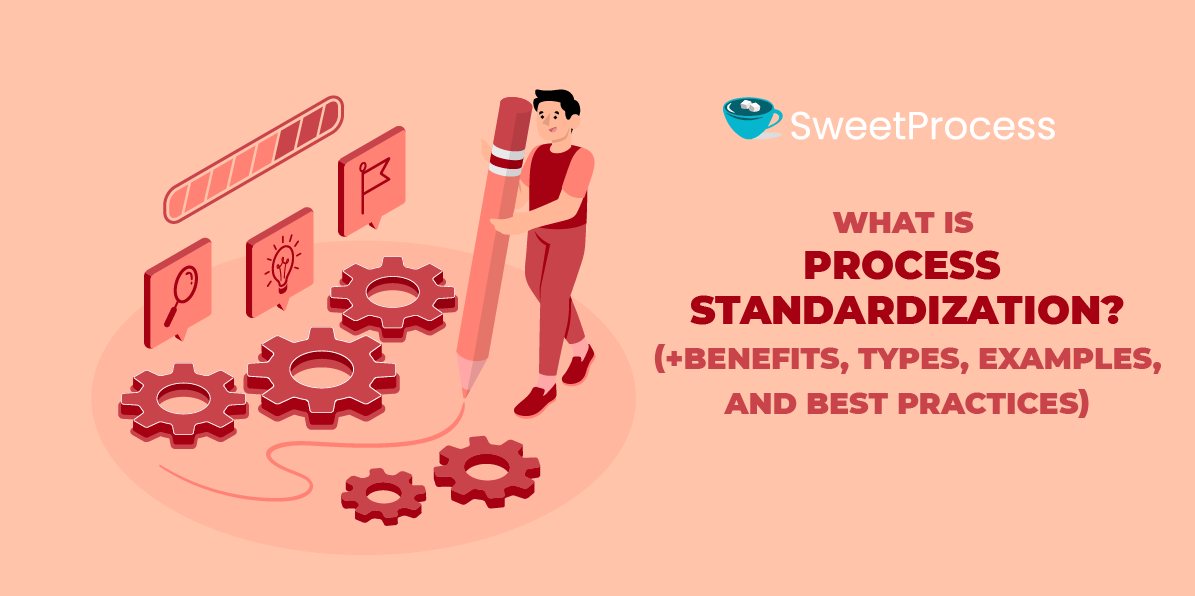
While you may already be familiar with the benefits of process standardization — how it enhances efficiency, boosts revenue, and safeguards your business — the critical question is how to achieve it.
This guide will provide an exhaustive insight into process standardization, offering a step-by-step breakdown of the crucial steps you need to take to help you seamlessly implement it within your organization.
You’ll also learn the knowledge necessary for effective business process standardization.
SweetProcess is our tool, and we built it to help small business owners document their procedures, processes, and policies. Sign up for a 14-day free trial today to see how it works.
Table of Contents
What Is Process Standardization?
Benefits of Process Standardization for a Company
Types of Process Standardization
How to Standardize Your Business Processes in 7 Steps
How to Standardize Your Processes Using SweetProcess
Real-World Examples of Process Standardization
Challenges of Implementing Process Standardization in an Organization
Process Standardization Tips and Best Practices
Standardize Your Business Processes in One Place Using SweetProcess
What Is Process Standardization?
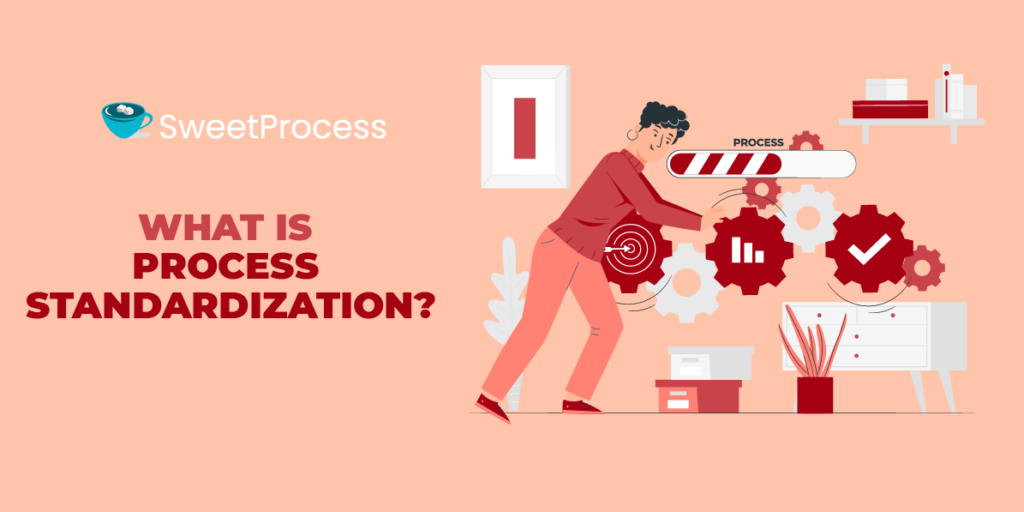
Process standardization refers to establishing consistency and uniformity in how tasks and activities are performed within your organization.
It involves creating a set of defined and documented procedures that your teams will consistently follow across various departments and branches.
More specifically, process standardization involves setting specific standards that workers must adhere to when completing routine tasks, such as addressing complaints, handling correspondence, and filing documents.
Standardization applies to all business operations and departments, from payroll processing and phone answering to client information recording, each with its own approved standards.
Benefits of Process Standardization for a Company
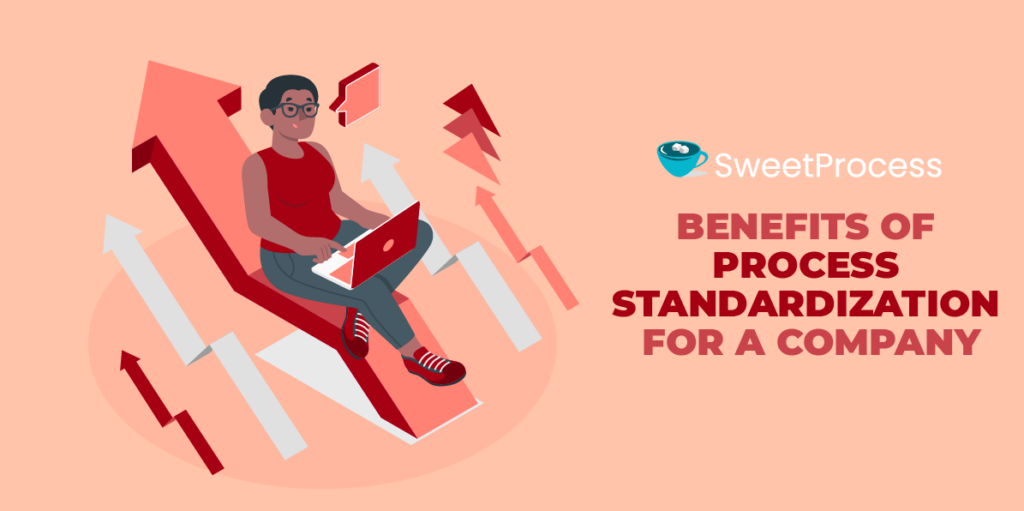
The importance of business process standardization lies in avoiding chaos and confusion that arise from varied execution methods.
Consistency in Product and Processes
Process standardization helps ensure that the processes and outputs of your organization are consistent, regardless of the location or personnel involved. This leads to more predictable and reliable outcomes.
For instance, McDonald’s adheres to a core menu featuring popular items like the Big Mac, Quarter Pounder, and Chicken McNuggets. This standardized selection remains consistent worldwide, delivering a uniform brand experience and quality across all McDonald’s locations.
Emphatically, when all employees adhere to uniform processes, there is a substantial decrease in the level of variability in your offerings. This results in enhanced product quality and consistency, ultimately improving customer experiences.
Ensures Customer Satisfaction
When creating any service or product, customer satisfaction is one of your primary objectives. Process standardization facilitates adopting optimal methods for service delivery that consistently meet customer expectations, encouraging their return for repeated experiences.
Saves Cost
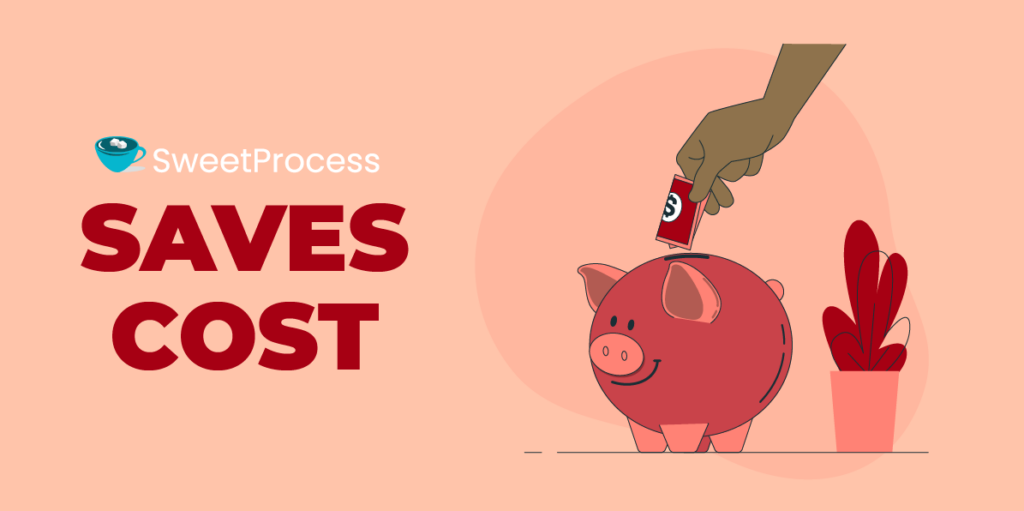
Engaging in trial-and-error approaches consumes capital that could be directed toward more strategic endeavors.
On the other hand, implementing standardized processes aids in reducing unnecessary operational costs associated with complex procedures.
Notably, Toyota spends 20% less to produce cars under its standardized platform than those of the older platforms.
Besides, when a significant portion of your budget is allocated to operational expenses, it directly impacts the pricing of your product or service. It, in turn, poses challenges for your target customers in affording your offerings.
Prevents Legal Risk
Process standardization helps ensure that your organization’s operations adhere to relevant laws, regulations, and industry standards. This reduces the likelihood of unintentional non-compliance and helps avoid legal penalties.
Besides, it helps create a culture that reduces the likelihood of employees unknowingly engaging in activities that could lead to legal risks.
Compliance and Risk Management
Moreover, process standardization allows you to consistently implement and enforce risk mitigation strategies. It includes measures to identify and address potential issues before they escalate.
Additionally, standardized processes provide a framework to create, review, and manage contracts for your business. They help to ensure compliance with applicable benchmarks, reducing the risk of contractual disputes and legal challenges.
Enhanced Employee Productivity
The consistency of standardized work and processes reduces confusion, minimizes errors, and allows employees to focus on their work without constantly adapting to changing procedures.
Besides, process standardization often involves identifying opportunities for process automation. By automating routine and repetitive tasks, your employees can focus on more complex and value-added activities, increasing productivity.
Competitive Advantage
Recall that standardized processes are designed to be more efficient, eliminating unnecessary steps and optimizing workflows. As a result, this process efficiency leads to cost savings, making your business more competitive by offering products or services at a lower cost than competitors.
Moreover, when customers can rely on consistent quality, it enhances their satisfaction and trust in your brand, giving your business a competitive edge. Again, businesses that adhere to standardized processes are better positioned to navigate legal challenges that could impact competitiveness.
Faster Scalability and Adaptability
Notably, standardized processes offer opportunities for scalability. As your business grows, it can more easily replicate and expand operations, maintaining consistency across different locations or business units.
Additionally, business process standardization streamlines the training and onboarding of new employees to your organization. In particular, clear process documentation and well-established procedures contribute to smoothing the learning curve.
Types of Process Standardization
Different industry operations require different levels of standardized processes. A one-size-fits-all approach does not apply. Each distinct business operation or enterprise relies on multiple professionally and widely accepted standards.
Document Standardization
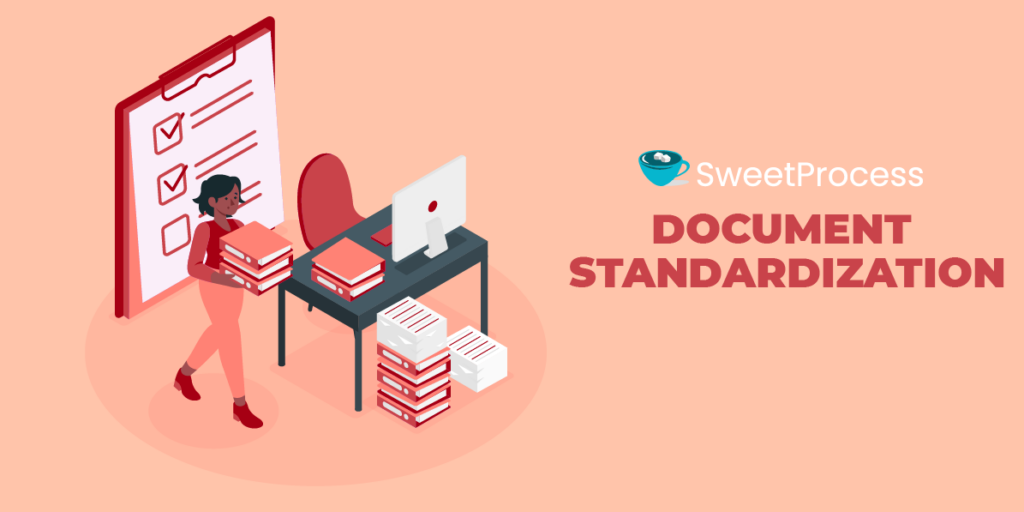
This standardization process establishes uniformity and consistency in creating, formatting, organizing, and managing documents within an organization.
The goal is to ensure all digital or physical documents adhere to predefined guidelines, ensuring a consistent and professional appearance. Key aspects of document standardization can include guidelines for fonts, font sizes, headings, margins, and other visual elements.
Also, it includes establishing naming conventions for process documents to ensure that files are easily identifiable, retrievable, and organized systematically.
Workflow Standardization
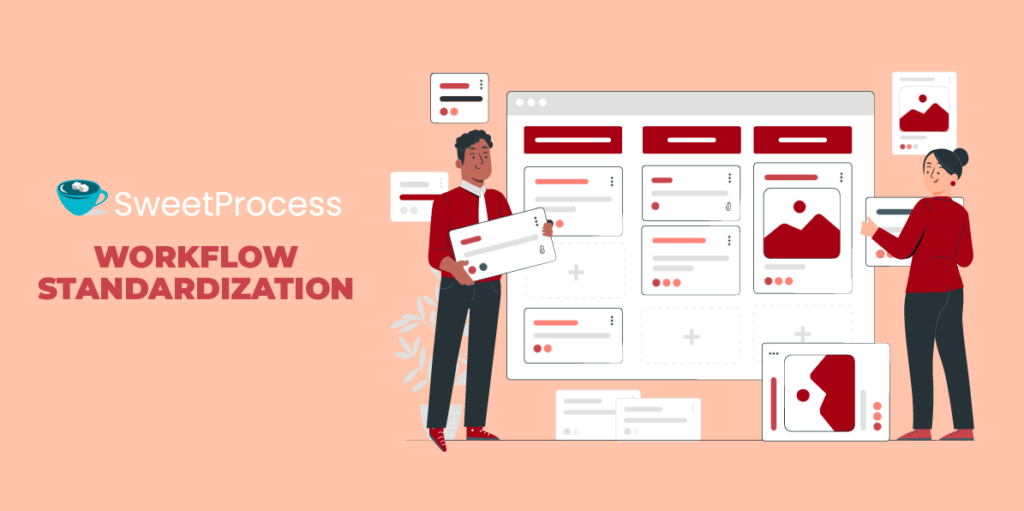
Standardizing workflows involves defining the sequence in which tasks are performed to ensure everyone follows the same steps, reducing variability and enhancing predictability.
Individuals understanding their contributions to an organization’s overall process creates clarity, minimizes confusion, and prevents tasks from falling through the cracks. Moreover, workflow standardization provides a baseline for continuous improvement efforts.
Communication Standardization
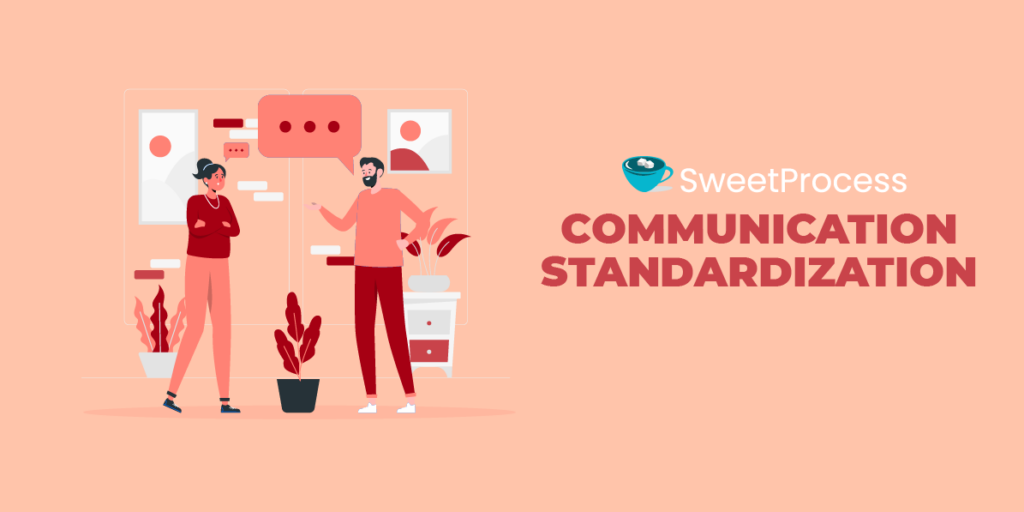
Communication standardization addresses the flow of information within an organization. It defines reporting structures, escalation paths, and protocols for disseminating information to relevant stakeholders.
Additionally, communication standardization eliminates misunderstanding by specifying a common language and agreed-upon terminology.
It specifies guidelines for the use of various communication channels. Moreover, communication standardization defines protocols for scheduling, conducting, and documenting meetings, ensuring that meetings are productive and focused.
Resources Standardization
Resources standardization addresses matters related to allocating, utilizing, and managing resources within an organization. It includes tangible assets, human resources, and technology.
Regarding human resources, it addresses matters relating to employee benefits, evaluation processes, and recruitment procedures. Concerning tangible assets, it defines procurement processes, vendor selection criteria, and negotiation protocols.
Besides, a standardized process for resources ensures assets are tracked consistently, reducing the risk of losses and facilitating efficient use. Also, resource standardization establishes guidelines for maintenance schedules and safety protocols.
Policy Standardization
Policy standardization establishes guidelines and rules that govern various aspects of organizational behavior, decision-making, and operations. It sets the codes of conduct within the entire organization and ensures adherence to legal and regulatory requirements.
Also, policy standardization provides guidelines for data security, access controls, and measures to protect against cybersecurity threats. It includes emergency procedures, workplace safety measures, and employee well-being instructions.
Performance Metric Standardization
Performance metric standardization puts forward uniform criteria for measuring and evaluating the performance of individuals, teams, processes, or the overall organization.
It specifies the key performance indicators (KPIs) relevant to each role or process, ensuring everyone understands what is being measured. Additionally, performance metric standardization involves benchmarking against industry standards or best practices.
Customer Service Standardization
Customer service standardization ensures customers receive a consistent and positive experience across various interactions with your organization.
You achieve this by establishing clear standards for service quality to guarantee that customer interactions meet defined expectations. It includes communication protocols, issues resolution processes, response time, etc.
Customer service standardization ensures that your service representatives are well-informed and equipped to accurately address customer queries.
How to Standardize Your Business Processes in 7 Steps
As discussed, standardizing processes is crucial to improving efficiency and ensuring consistency in operations. Here are seven steps to help you standardize your business processes:
Step 1: Identify Processes
Start by identifying your core business functions. Then, pinpoint specific processes causing bottlenecks, inconsistencies, or impacting customer satisfaction. Seek out tasks that are being executed in multiple ways.
Step 2: Document Current Processes
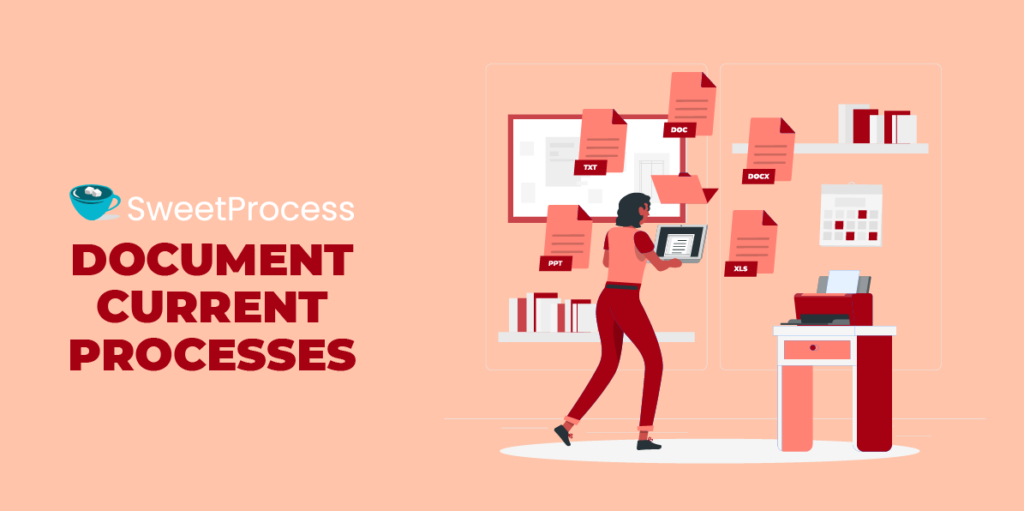
Once you’ve identified the key business processes, the next crucial step in standardizing is to document them. This involves capturing every step, decision point, and handoff involved in the process, from start to finish.
Step 3: Analyze and Streamline
Once you have documented your current processes, analyze them for efficiency. Identify areas for improvement and streamline the workflow.
Analyze the flow, inputs, outputs, and decision points. Identify bottlenecks, redundancies, and areas where the process may be inefficient or prone to errors.
Combine similar or related tasks. Utilize technology to automate repetitive, manual tasks for improved operational efficiency.
Step 4: Set Standard Operating Procedures (SOPs)
After executing your business process analysis and streamlining, it’s time to solidify the improvements and ensure consistency through a standardized procedure.
A Standard Operating Procedure (SOP) provides a standardized set of instructions that guide employees through executing specific tasks and processes.
Develop step-by-step procedures for each process. Clearly outline the sequence of activities, specifying what needs to be done, who is responsible for each specific task, and any relevant checkpoints or decision points.
Step 5: Establish Key Performance Indicators
Key performance indicators (KPIs) are measurable metrics that help organizations gauge their processes’s effectiveness, efficiency, and success.
While drawing inspiration from widely recognized industry KPIs is beneficial, let yours align uniquely with your business objectives. Overall, established KPIs should be SMART—specific, measurable, achievable, relevant, and time-bound.
Step 6: Train the Process Users
You can train employees via interactive workshops and developing training materials. Also, you can train them via written documentation, visual aids, videos, or interactive modules.
Also, provide hands-on demonstrations if the standardized processes involve specific software or tools. Simulate real-life scenarios to help employees practice decision-making and problem-solving within the context of the new company’s processes.
Step 7: Continuous Monitoring and Improvement
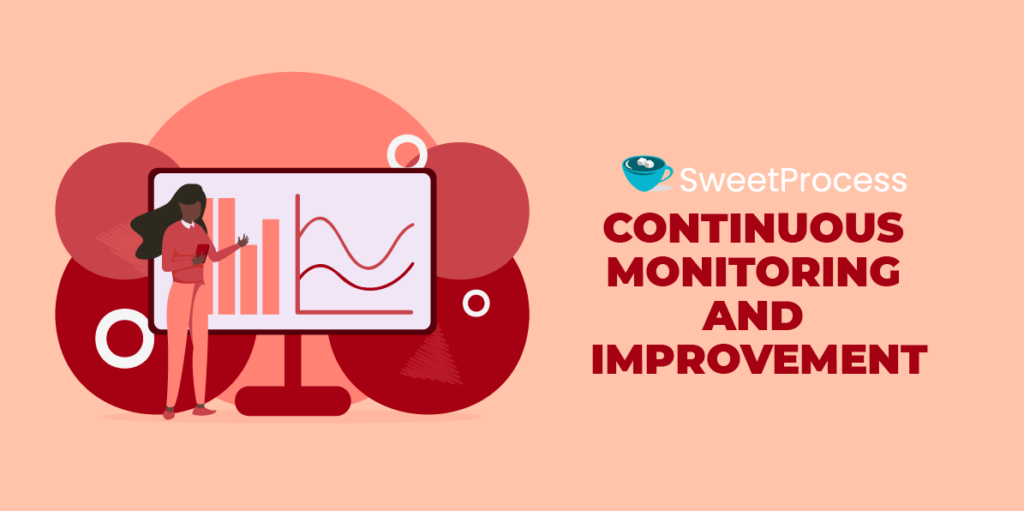
Note that standardizing processes is not a one-time effort. To truly achieve lasting success, you need to monitor your progress and actively seek opportunities for improvement continuously.
Regularly review performance data to identify trends, patterns, or deviations. Solicit feedback from employees who use the standardized processes regularly. Conduct periodic audits of the standardized processes to ensure compliance and identify areas for improvement.
This ongoing process ensures that standardized procedures remain effective, efficient, and aligned with organizational goals.
How to Standardize Your Processes Using SweetProcess
While process standardization ensures the delivery of high-quality outputs, using a standard operating procedure software such as SweetProcess is essential to sustain and optimize this process. You can sign up for a free trial of our tool here.
Specifically, when tackling a substantial task, such as hiring employees, it is prudent to break it down into its components. Then, create dedicated procedures for each part and aggregate these related procedures into a cohesive process.
How to Create a Process on SweetProcess
Creating a process on SweetProcess involves just eight steps.
1) Log in and click on the “More” tab on the homepage. A short menu appears, containing links to other pages, such as “Processes.” Click on it.

2) Once the page opens, click on the “Create Process” button in the top right-hand corner of the page. Alternatively, you can click the “Create a Process” button in the middle of the page.

3) Afterward, enter the title in the space marked “Process Title.”

4) If you’re creating a process for the first time, you may have to create a new team. To do this, click on “Add to Teams.”

5) Click on “Create Team.”
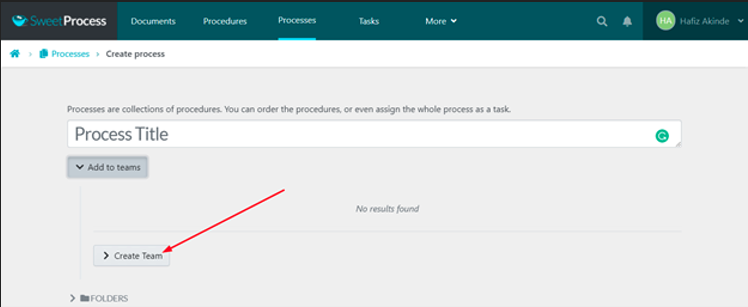
6) Name your team and then click on “Create Team.”
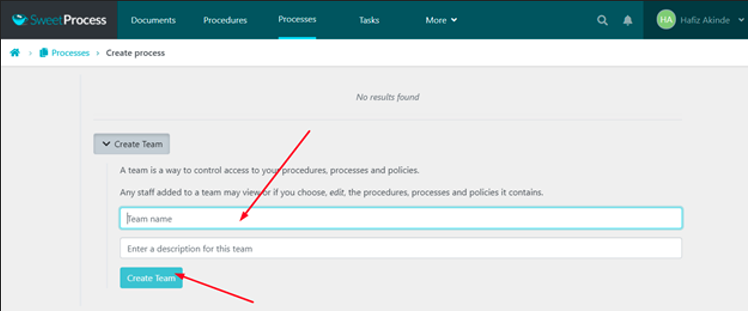
7) Click on the “Continue” button.
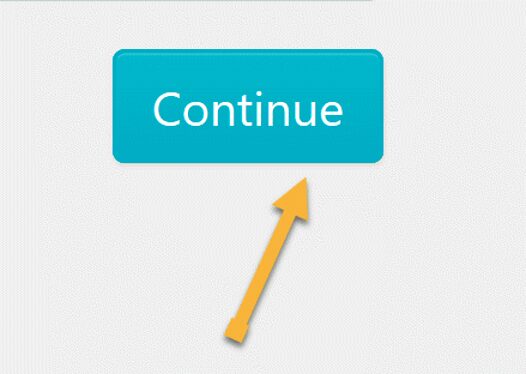
The process you just created will save directly to draft, and you must approve it to make it go live.
8) Click on “Approve.”
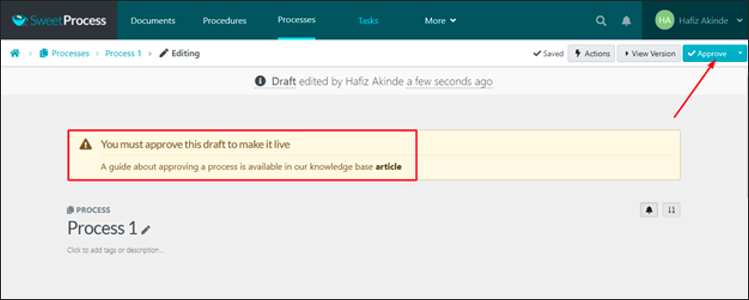
How to Manage a Process on SweetProcess
For example, let’s manage a process for Online Shopping. Note that processes are a collection of procedures. For this example with Online Shopping, we will first establish procedures such as secure payment processing using SweetProcess.
From the homepage, locate and click the “More” button. A short menu appears containing links to other pages, such as “Procedures;” click on it. You will find the “Create Procedure” button on the top right-hand side, as displayed below.

Type in “Secure Payment Processing” as your procedure title and click “Continue.” Note that beside “Continue” is another button, “Write with SweetAI.” You can use the AI tool to sketch out a sample of the content of your procedure title.

After clicking continue, the next step is to create the first step for the Secure Payment Processing procedure, which could be identifying and verifying the customer. Add a brief description of this step, as shown below.
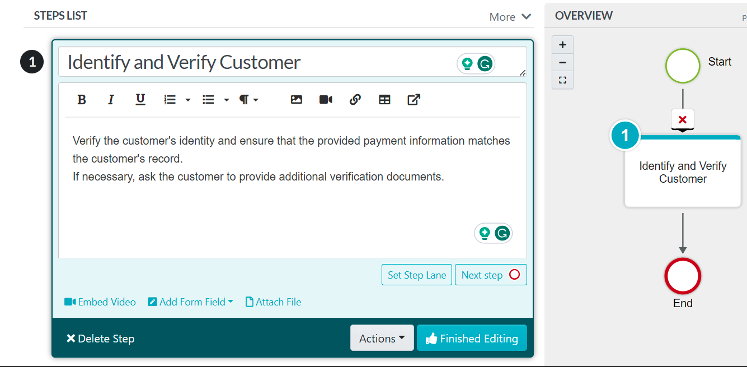
Note that you can include images, videos, tables, or embed a link in the description. Click “Finished Editing” once you are satisfied with the content. You can always come back and update it.
Adding other steps to the Secure Payment Processing procedure takes a similar approach. The likely steps are as shown below:
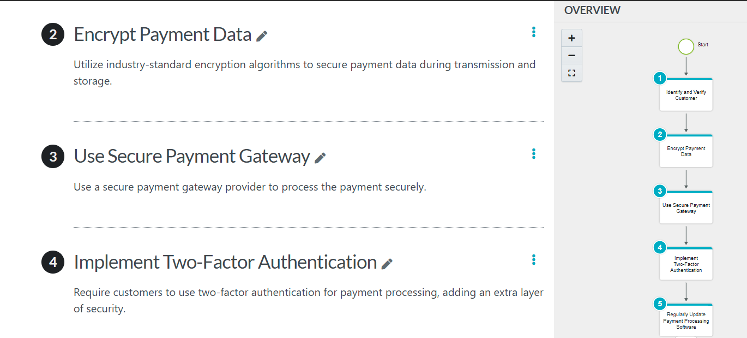
Also, for the Online Shopping process, you can have other procedures such as Product Delivery Tracking and Customer Service Response. The Product Delivery Tracking procedure step list can include:
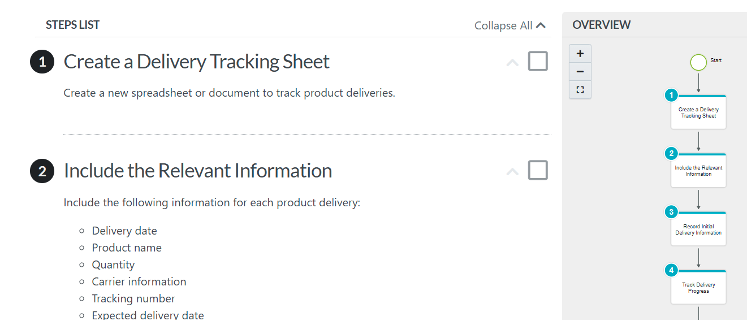
Similarly, the Customer Service Response procedure can have sample steps such as:
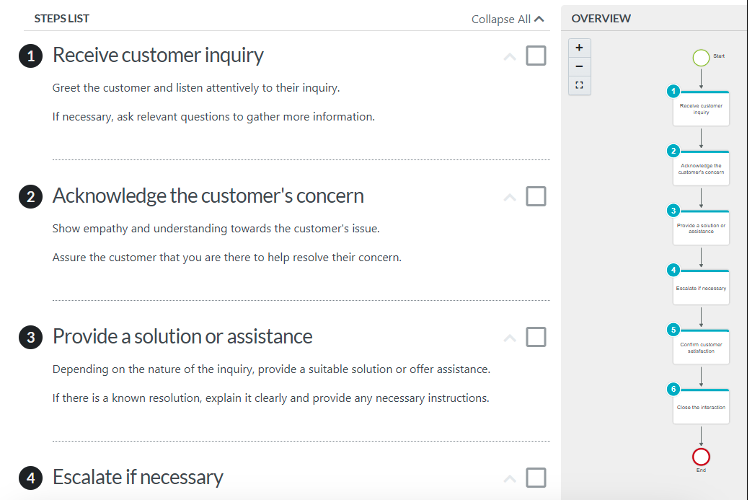
With enough procedures established, the next step is to add them to the Online Shopping process.
How to Add a Procedure to a Process Using SweetProcess
1) Go to your processes page and pick the process to which you want to add procedures. In this case, Online Shopping.

2) Click on the “Add new Procedure” button on the new page that opens up.
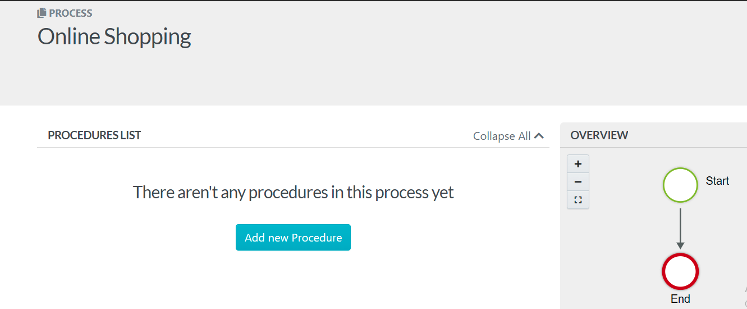
3) Upon clicking, a new page opens, prompting you to add a list of steps. This step list can be a procedure, a decision, or an end step. In this case, click “Procedure.”
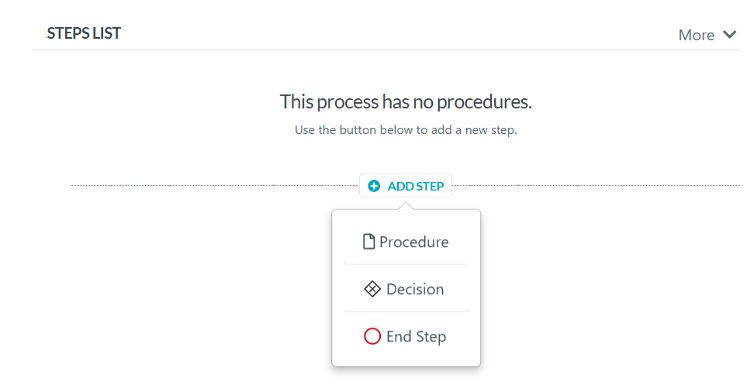
4) The following prompt you will get is to search your existing procedures to add them or create one on the fly. Since you have already created three procedures for the Online Shopping process, you simply add them.
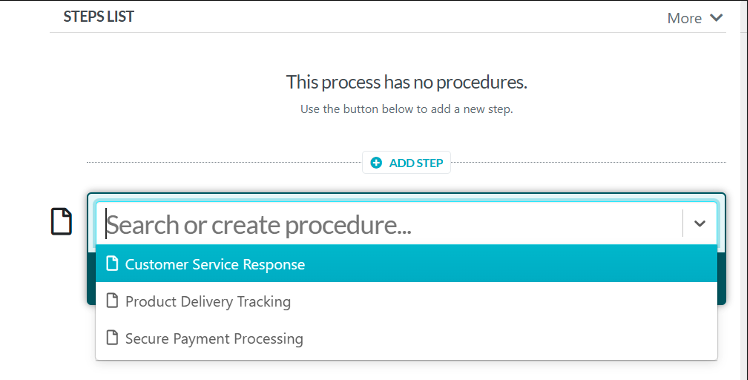
5) With the three new procedures added, you must approve the update to go live. The approve button is always on the top right-hand corner.

There you have it: a process standardization for an Online Shopping experience with procedures to assist employees in effectively managing the task. Enroll for a SweetProcess free trial here.
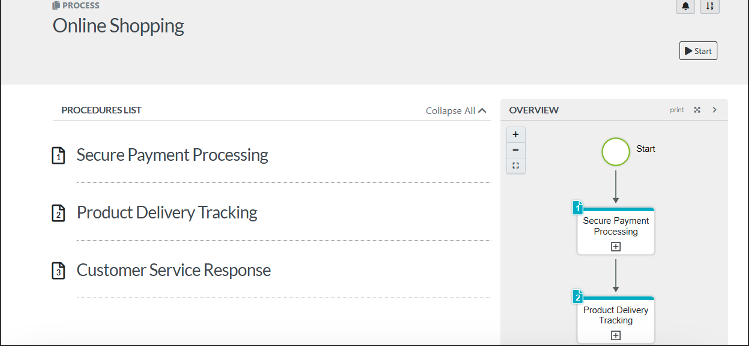
How to View the Version History of a Process in SweetProcess
This takes just two steps.
1) While viewing a process, click on the clock icon.
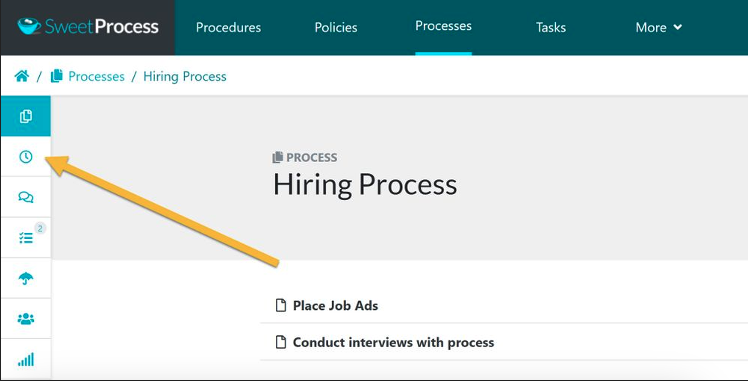
This will open up the version history sidebar menu that lists the current version of the process and all the other versions so far.
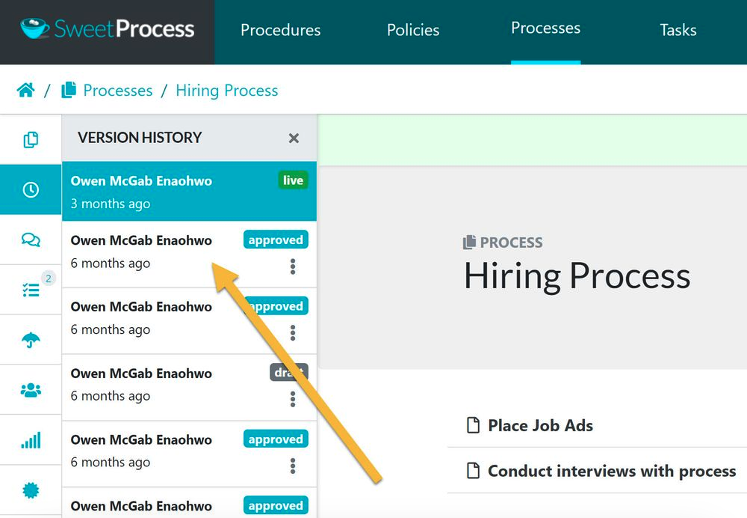
2) After the version history sidebar menu opens up, click on the version of the process you want to see.

Real-World Examples of Process Standardization
Below are real-life scenarios where process standardization has proved invaluable, such as in payroll processes, health, customer service, and manufacturing sectors.
Payroll Processes
American e-commerce giant Walmart notably standardized its wage structure across stores, eliminating variability in pay rates.
As a Wall Street Journal retail reporter affirmed, the initiative was designed to standardize wages, ensuring equitable staffing across different store job types. Specifically, the purpose was to empower workers to explore various roles without pay being a limiting factor.
Health
The US-based medical academic group, Mayo Clinic, standardized its clinical pathways for common procedures. It included preoperative testing, medication administration, and post-operative care. Mayo Clinic affirmed the initiative improved patient outcomes and reduced variations in care delivery.
Customer Service
Zappos, the renowned online shoe retailer, empowered frontline customer service agents to make decisions without manager approval.
According to the former CEO Tony Hsieh, the representative has the authority to take any necessary steps to resolve a client’s complaint. Whether issuing a refund, dispatching a replacement product, or providing attentive and empathetic support, Zappos’s rep moves on without managerial approval. Ultimately, it led to faster resolution times and higher customer satisfaction.
Manufacturing
Toyota New Global Architecture (TNGA) is a perfect example of process standardization in the manufacturing industry. TNGA is a platform strategy developed by Toyota Motor Corporation to standardize and streamline the development of its vehicles.
In particular, the platform is designed with a standardized seat height, enabling the sharing of essential interior components such as steering systems, shifters, pedals, seat frames, and airbags. Compared to Toyota’s older platforms, TNGA-based cars save Toyota up to 20% on production costs.
Challenges of Implementing Process Standardization in an Organization
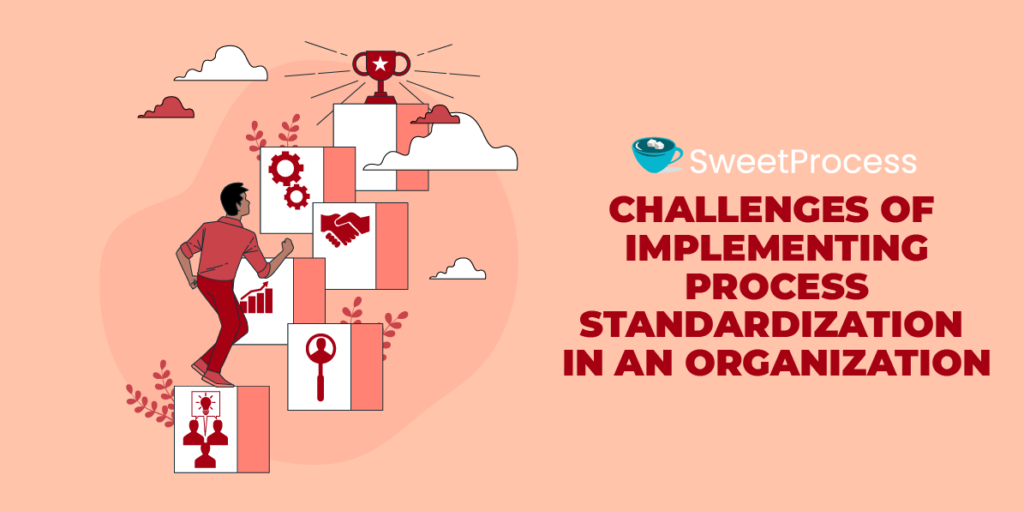
While implementing process standardization in an organization offers many benefits, it also comes with its fair share of challenges.
Limits Creativity
Standardization can sometimes be rigid, limiting the ability of employees to think creatively to come up with innovative solutions.
However, it is crucial to perceive process standardization for its true nature rather than its outward appearance. In other words, standardizing operational processes involves eliminating conflicting ideas or suggestions that might impede task execution once the process is underway.
Ultimately, your organization needs to balance standardization and encouraging creativity by allowing for some flexibility and room for individual contributions.
Results in Monotony and Boredom
Of course, repeated adherence to standardized processes might lead to monotony and boredom among team members, potentially affecting employee morale and job satisfaction.
To address this, introduce elements of variety and autonomy within standardized processes. This might involve rotating tasks, providing opportunities for cross-training, or offering employees independence over certain aspects of their work process.
Complex Implementation
Implementing standardized processes, especially in large organizations, can be challenging and resource-intensive. As a solution, break down the implementation into manageable phases. Involve stakeholders in the process and provide adequate training and support.
Requires Timely Updates
Another burden of process standardization is that the processes require routine updates. However, the updates are necessary to meet technological changes, regulations, or organizational needs. Besides, outdated processes could become ineffective over time.
Resistance from Employees
Employees may resist changes to their established working methods, especially if standardization threatens their autonomy or workload. To lower such resistance, involve them in the initial standardization process. Highlight the benefits and provide training support to help employees adapt to the changes.
Ensuring Ongoing Compliance
Maintaining consistent adherence to standardized processes can be challenging, and deviations may occur over time. This is especially true if there are no consequences for non-compliance.
Therefore, implementing monitoring mechanisms, regular training, and a positive organizational culture can help identify and address areas where compliance is slipping.
Process Standardization Tips and Best Practices
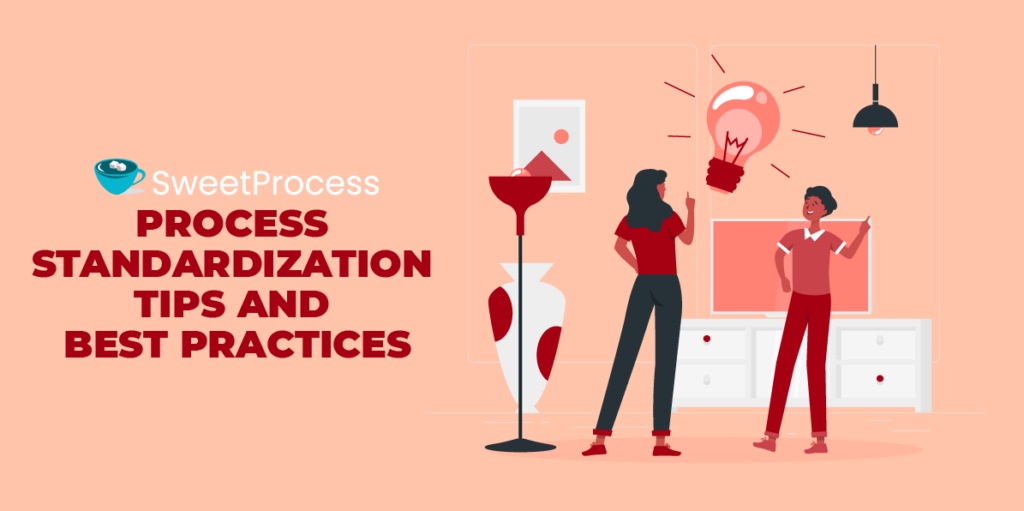
Engage Stakeholders
As highlighted earlier, involving key stakeholders, including employees and managers, in the standardization process is crucial to its success. Also, conduct workshops and collaborative sessions to gather insights and perspectives. Create a dedicated team or committee to oversee the standardization effort.
Document Processes
Thoroughly document existing processes before attempting to standardize them. To aid the documenting process, include process maps and use flowcharts and diagrams to understand each step comprehensively.
Train Employees
Develop training programs for your employees to ensure they understand the standardized processes and their roles. This can include in-person workshops, online modules, and on-the-job coaching.
Imbue a Culture of Continuous Improvement
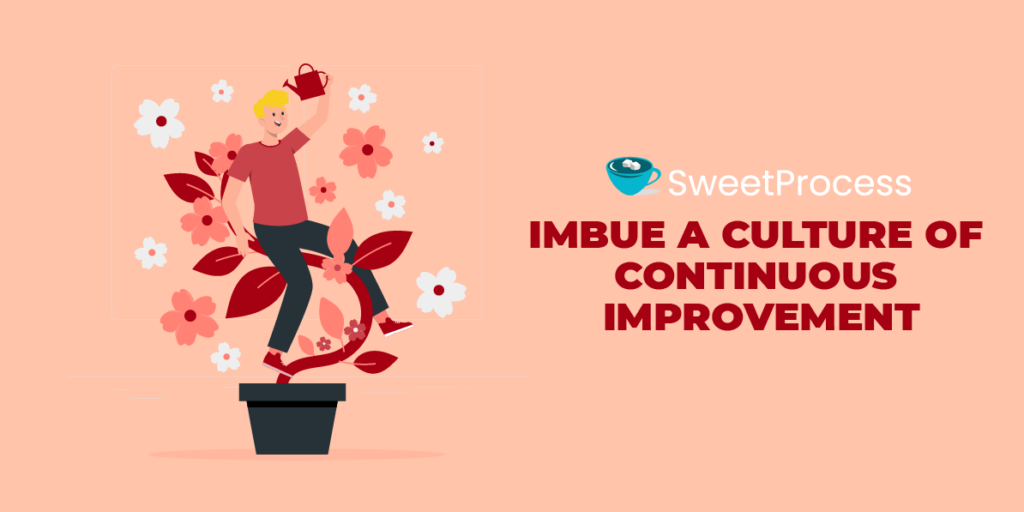
Encourage a culture where feedback is readily given and improvements are constantly sought. Recognize and reward employees for their contributions to process improvement. Establish feedback mechanisms, such as suggestion boxes or regular review meetings.
Prioritize Process Mapping
Visualizing processes through flowcharts and diagrams clarifies complex workflows. This visual representation helps understand the activities flow and facilitates discussions on standardization opportunities.
Get Employee Buy-in
Get employees to agree with your standardization goals and mission by clearly articulating the reasons and benefits, such as greater efficiency gains and improved quality. Seek their input during the planning and implementation phases. Establish a sense of shared purpose.
Invest in Quality Software
Utilizing software makes it easy to manage process performance and conduct analyses. Invest in technology solutions that align with your organization’s needs. Look for software that allows for workflow automation, easy tracking, and reporting.
Your chosen tool should be able to monitor task quality, identify areas for growth, and pinpoint activities contributing to increased costs.
This, for many clients, is where SweetProcess comes in. You can sign up for a SweetProcess free trial here.
Standardize Your Business Processes in One Place Using SweetProcess
SweetProcess is a business process management software. It relies on standard operating procedures (SOP) to establish daily workflows for employees. It guides new hires interactively through procedures and allows users to document tasks, monitor progress, and refine processes.
SweetProcess has played a pivotal role in organizing and simplifying operations for numerous businesses, such as XL.net, an IT services firm based in the United States.
Previously, XL.net suffered uncertainty about its course of action regarding its documentation. It faced challenges with numerous unattended processes, leading to confusion regarding task execution methods. Specifically, XL.net’s CEO, Adam Radulovic, admitted: “We had processes that weren’t touched for years. We didn’t have a process of easily archiving old ones that were no longer relevant, so they became stale and made it challenging for our staff to know: which ones do I follow?”
Happily, the resolution to the chaos emerged with the adoption of SweetProcess.
Similarly, Cullen Insurance Agency faced persistent challenges when it moved to scale its operation. It had issues articulating and reiterating tasks and operations to its employees, with communication gaps remaining apparent in its workflow.
However, like XL.net, Cullen Insurance Agency successfully turned things around with SweetProcess. Cullen Insurance Agency had trouble accessing documents in the previous software systems it utilized, especially when incorporating new processes.
SweetProcess changed the game entirely. Accessing documents became a breeze, with a simple search by title allowing instant retrieval. This feature particularly stood out to the firm’s CEO, Zac Cullen.
“I liked a lot of things in SweetProcess, especially the searchability,” remarked Zac.
To undergo similar business transformations, sign up for a complimentary 14-day trial on SweetProcess. No credit card details are needed for the trial subscription.


